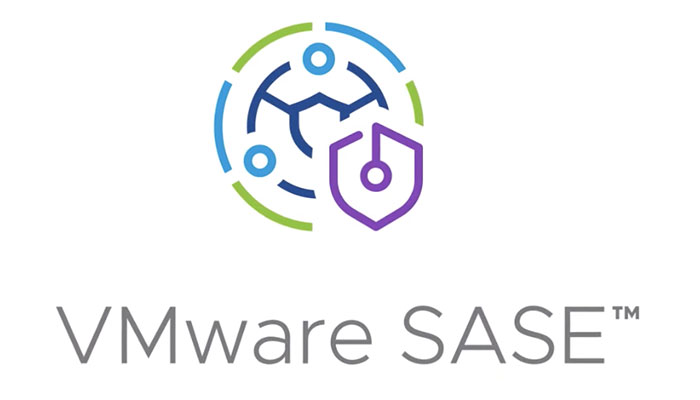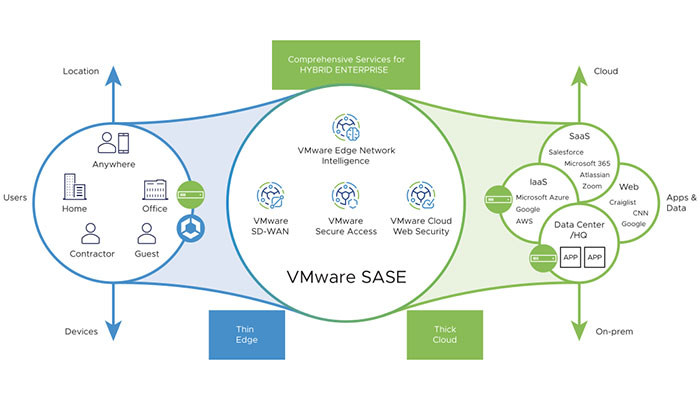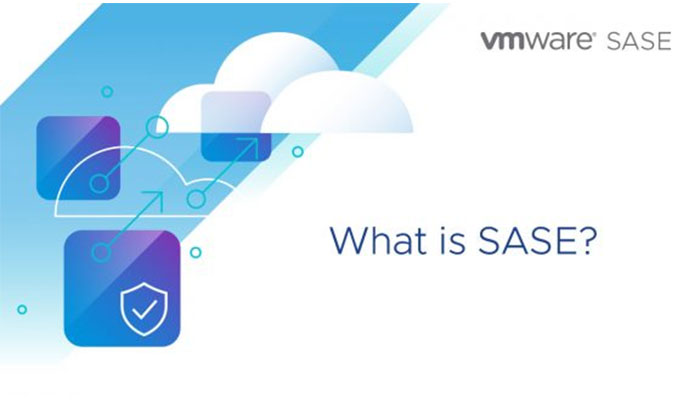VMware SASE
SASE stands for Secure Access Service Edge. The VMware SASE platform is a single management platform that combines network security capabilities with WAN capabilities to provide secure, optimal, and automated access to applications and workloads. It works in the cloud by extending software-defined networking and security from any location of users or applications just ahead of large IaaS and SaaS providers.
Secure access service edge (SASE) is a network architecture that transforms software-defined wide area networks (SD-WAN) and security into a cloud service. This architecture brings simple WAN deployment. By means of this architecture, you can improve productivity and Improve security and get the right bandwidth for every application.
Because it is a cloud service, SASE can be easily scaled and costed, based on usage. As a result, it can be an attractive option at the time of rapid change in the programs of companies and organizations. While some vendors in this space offer hardware devices to connect employees at home and corporate data centers to their SASE networks, most vendors handle communications through client software or virtual appliances. The term SASE was first used in a 2019 article by Gartner describing its goals. This article states that SASE is under development and not all features may be readily available yet.
For more information, VMware License
Why is SASE needed?
The digital transformation of businesses has made security move towards cloud technology. This has made service alignment a necessity to reduce complexity, improve speed and performance, enable multi-cloud networking, and secure the new SD-WAN-based architecture.
What are the benefits of the SASE plan?
Because it is a single service, SASE reduces complexity and cost.
Companies deal with fewer vendors, the amount of hardware required in branch offices and other remote locations is reduced, and the number of end-user device representatives is also reduced. IT administrators can centrally set policies through peer-to-peer management platforms, and these policies are applied to distributed PoPs close to end users. End users have the same access experience regardless of what resources they need and where they are located.
SASE also simplifies the authentication process by applying appropriate policies to each resource a user searches for based on their initial login. Security is enhanced because policies are applied equally regardless of where users are located. By updating to new threats, the service provider outlines how to protect against them without requiring new hardware for the enterprise.
SASE supports a zero-trust network because it bases access based on user, device, and application, rather than location and IP address. A greater percentage of end users such as employees, partners, contractors and customers can access resources without using traditional security methods – such as VPNs and DMZs – without compromising their connectivity, becoming a safe haven for potential large-scale attacks on the enterprise. SASE providers can offer different services so that each application gets the bandwidth and network responsiveness it needs. With SASE, enterprise IT staff have less to do with deployment, monitoring, and maintenance and can be assigned higher-level tasks.
The SASE design integrates several previously separate security and networking capabilities into one comprehensive cloud service. If companies use SASE, this plan:
- It will secure remote access
- Integrated access secures users
- It reduces costs and complexity
- Improves security by implementing specific procedures
- Limits access based on user identity, device, and software
- It creates harmony and enables instant optimization of the software
- With the help of central management, it increases the productivity of security and network employees
VMware SASE Platform Components
The components of VMware SASE work together to provide application quality assurance, intrinsic security, and cloud-focused operational simplicity. Its component includes:
- SD-WAN
- Cloud Web Security
- Zero Trust Network Access (ZTNA)
- Artificial intelligence for IT operations (AIOps)
Integrated SD-WAN
Traditionally, WANs have consisted of standalone infrastructures that often require heavy investment in hardware.
The SASE version is completely cloud-based. It is defined and managed by software and has distributed PoPs that are ideally located near enterprise data centers, branches, devices and employees. A large number of PoPs is important to ensure that as much of the company’s traffic as possible accesses the SASE network, avoiding latency and Internet security on the Internet.
Through this service, customers can monitor network health and set policies for their specific visit. Because traffic from the Internet is first delivered through the provider’s network, SASE can detect dangerous traffic and intervene before it reaches the enterprise network. For example, DDoS attacks can be mitigated on the SASE network, saving customers from malicious traffic floods.
Firewall as a service
In today’s distributed environment, more and more, both users and computing resources are located at the edge of the network. A flexible, cloud-based firewall as a service can protect these edges. As edge computing grows and IoT devices become smarter and more powerful, this capability becomes increasingly important.
Offering FWaaS as part of the SASE platform makes it easy for companies to manage their network security, set uniform policies, spot anomalies and make changes quickly.




